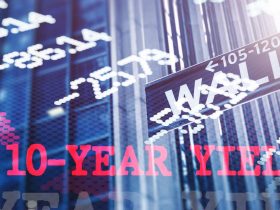Last week, Federal Reserve Chairman Jerome Powell shared his apprehensions about persistently high inflation rates in a rather vague speech from Jackson Hole, leaving the audience and investors to speculate about future policy decisions. The economic landscape today echoes the inflationary upswing of the 1970s, raising concerns about a possible reacceleration of inflation in economies worldwide.
In the face of stubbornly high inflation, the Fed has been making determined efforts to bring inflation down to their 2% goal. Powell’s recent remarks have highlighted the institution’s commitment to this mission, insinuating future policy tightening.
In his speech, Powell firmly stated the Fed’s intention to keep the benchmark federal funds rate within a range of 5.25% to 5.5%, representing a 22-year high. However, he refrained from providing any explicit indication about future rate hikes. Powell likened the current economic scenario to navigating by the stars in cloudy skies, pointing out the uncertainty surrounding the neutral rate of interest. As a result, the exact level of monetary policy restraint remains ambiguous.
Powell’s remarks had a muted impact on the stock market, with a marginal increase in the Dow Jones Industrial Average, S&P, and Nasdaq following his speech. However, Wall Street is treading cautiously, bracing itself for significant policy announcements from the Fed.
All Eyes On The Labor Market
The Fed’s latest stance comes amidst a complex economic backdrop, marked by a blend of encouraging and worrying indicators. While the Fed’s aggressive tightening tactics have been a cause for concern, consumers have witnessed some relief as inflation has decelerated from its peak of 9.1% last June. Even though inflation remains above the 2% mark, businesses have continued their hiring spree, reflecting a robust labor market.
In fact, the labor market has demonstrated remarkable resilience despite the economic turbulence. Despite a sharp cooling in hiring projected for August, the US jobs market has successfully maintained a 30-month streak of monthly gains. However, this labor market tightness has ignited discussions about its potential impact on inflation, as strong hiring can induce companies to increase wages, further fueling inflation.
Echoes From The Past
Drawing parallels with the inflationary upswing of the 1970s, today’s economic environment exhibits signs of a potential reacceleration of inflation. The 1970s witnessed severe inflation driven by two oil price shocks that triggered a surge in energy prices, causing ripple effects throughout the economy.
Recent data reveals an unsettling trend, particularly in Germany, with signs of inflation acceleration after three months of deceleration. Given the interconnectedness of global economies, this uptick in German inflation could well foreshadow a similar trend in the United States and other economies.
One of the major challenges in moderating inflation in the current economic scenario is the high level of wage growth. There is a strong correlation between wage growth and consumption, which can further fuel inflation. However, reducing wage growth could necessitate a recession, given the resilience and tightness of the labor market.
A Long Road Ahead
The Fed is cognizant of the risks of inflation reacceleration and has indicated its readiness for additional rate hikes. However, combating inflationary pressures such as wage growth is a daunting task, especially in the face of continued government spending programs.
Looking ahead, the resurgence of energy prices after a period of moderation in 2022 and early 2023 poses a significant risk to the smooth deceleration of inflation. Given the pervasive impact of energy prices on the economy, a surge in these prices could trigger a cascade of inflationary pressures.
Achieving sustainable control over inflation and bringing it down to lower target levels will require a stringent fiscal policy. The complexities of inflationary pressures go beyond simply tracking the consumer price index to forecast the Fed’s actions.
As we delve into the current global economic scenario, it becomes evident that Americans must prepare for a possible inflationary upswing akin to the 1970s. Monitoring the labor market and wage growth will provide valuable insights into the path of inflation and the Fed’s progress towards achieving and sustaining its target rate of 2% inflation. In the meantime, the world awaits the Fed’s next move with bated breath.
Read the full article here













Leave a Reply